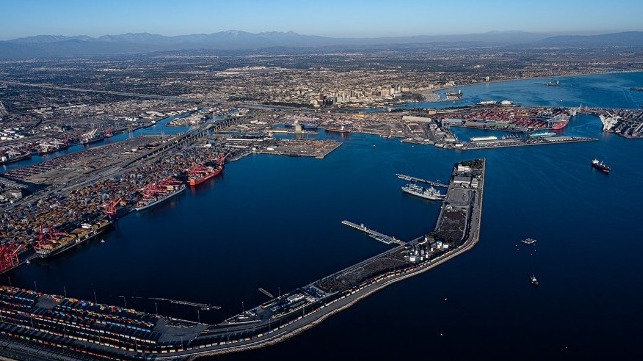Long Beach Completes Terminal Upgrades to Manage Record Container Flow

Reporting that it believes container volumes have reached a “new normal,” the Port of Long Beach in California continues to set monthly records in volume as it completes steps to handle the increased volumes. According to port directors, the resilient consumer demand continues to drive high volumes of cargo through the Port of Long Beach, which as of July has handled a record number of containers for 12 of the last 13 months.
To help the port to manage the future flows of containers, The Port of Long Beach is completing a long-term investment project to redevelop the area known as the Middle Harbor. A multi-year three-phase project consists of a 300-acre container terminal area. Port officials noted during a press conference that the area if it were its own port would rank sixth in the U.S. in size.
The new terminal is also one of the most environmentally advanced in its operations. The port is using electrification to reduce emissions while moving the containers. Shore power is available for the ships at all the berths, and they installed solar panels as well as taking steps to optimize operations to become zero emissions. They are preparing for a formal dedication of the completed project.
Year-to-date, the Port of Long Beach has processed more than 5.5 million TEUs, a better than 32 percent increase over the same period in 2020. During July they moved 784,845 TEUs, exceeding July 2020, which had been the best July on record, by more than a four percent increase.
Like many U.S. ports. Long Beach reported that the volume growth however is currently coming from imports. Imports slightly grew in July by less than two percent to 382,940 TEUs. Exports however were down over 20 percent to just under 110,000 TEU. Empties moving out of Long Beach ballooned 22.8 percent, to 291,955 TEUs.
“Ships arrived last month to move these empty containers out of the harbor and clear valuable terminal space as we handle historic amounts of trade,” said Port of Long Beach Executive Director Mario Cordero. “These boxes are a valuable commodity in the overstressed global supply chain. Our loaded exports are likely to rebound this month.”
Near-term the port continues to expect to see spikes and delays in volume based on the waves of COVID-19 in parts of Asia. The outbreak at the Port of Yantian in China delayed some vessels that called at the Port of Long Beach in July, port officials reported. They also believe that it is likely that the increase in COVID-19 cases in Vietnam that recently were impacted their container ports will disrupt supplies in the months ahead as factories shut down to contain outbreaks of the virus.
The Port of Long Beach and the San Pedro Bay may also be impacted by the closing of a terminal in China’s Ningbo-Zhoushan port complex. The second-largest container port in China continued to have one of its terminals closed due to a report of COVID-19. The terminal remained closed for the sixth day. UK-based (re)insurance risk management consultant the Russell Group said last week that its analysis revealed that 11 percent or $8.3 billion in trade coming from Ningbo goes to Long Beach.
